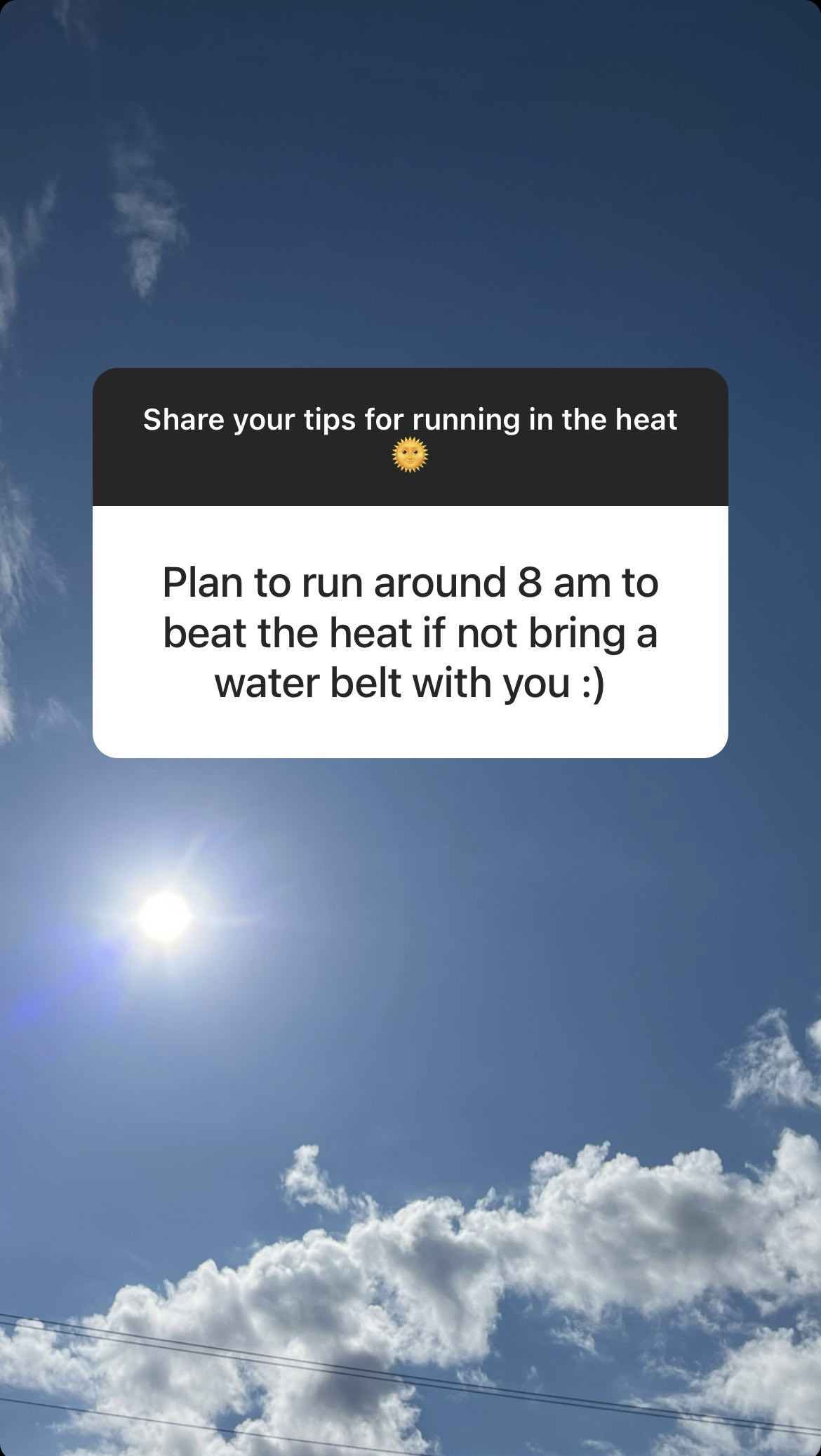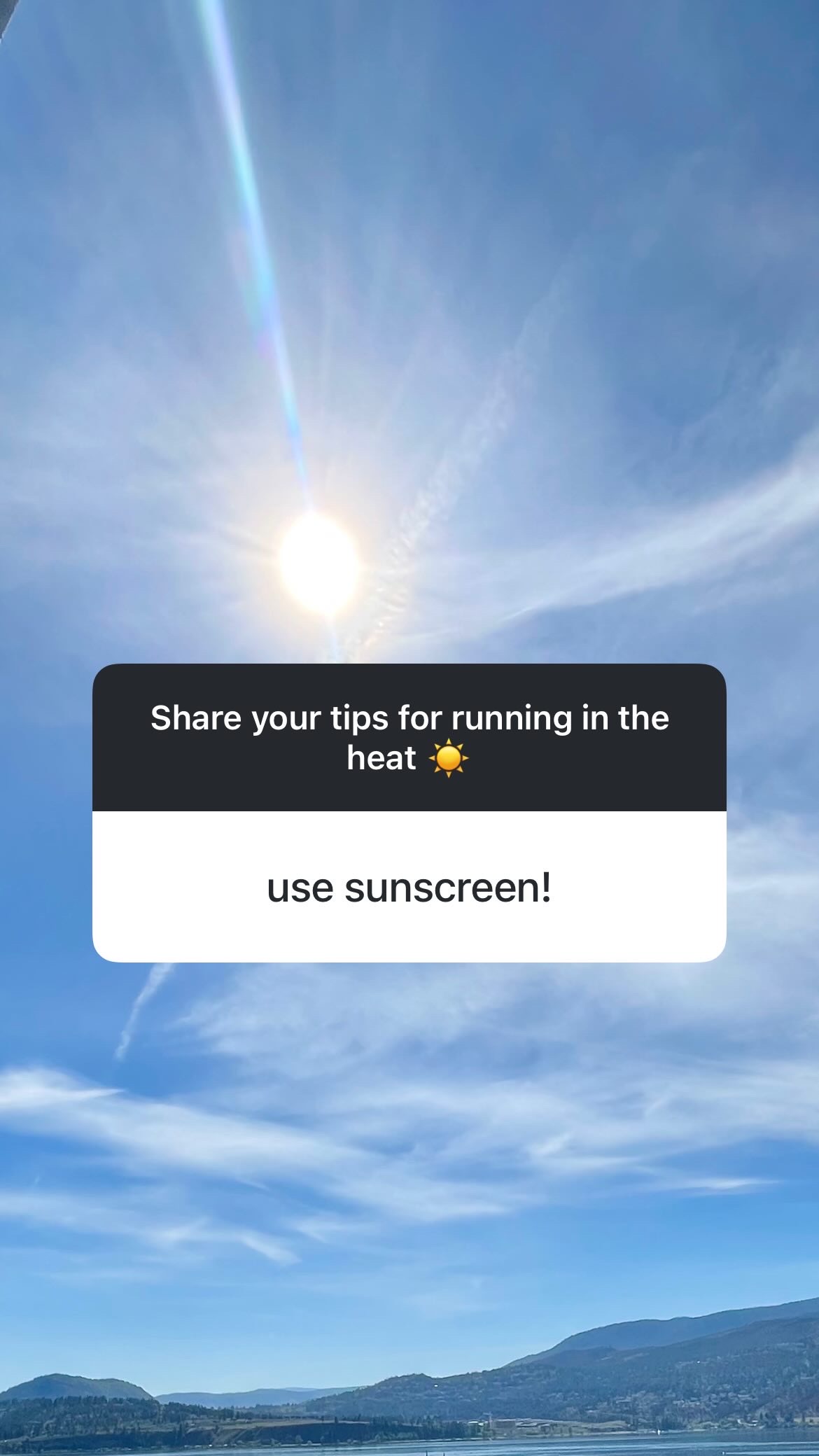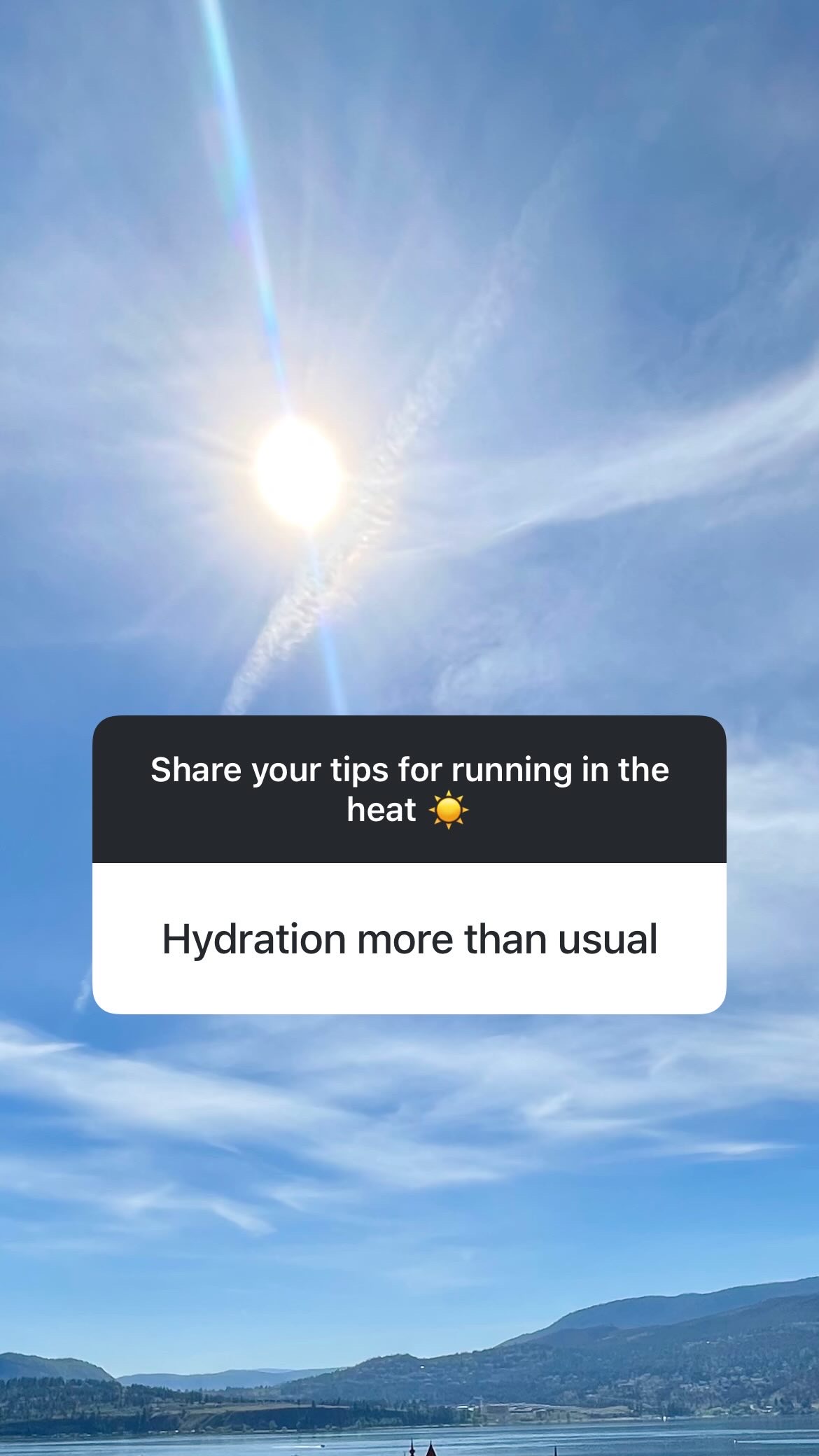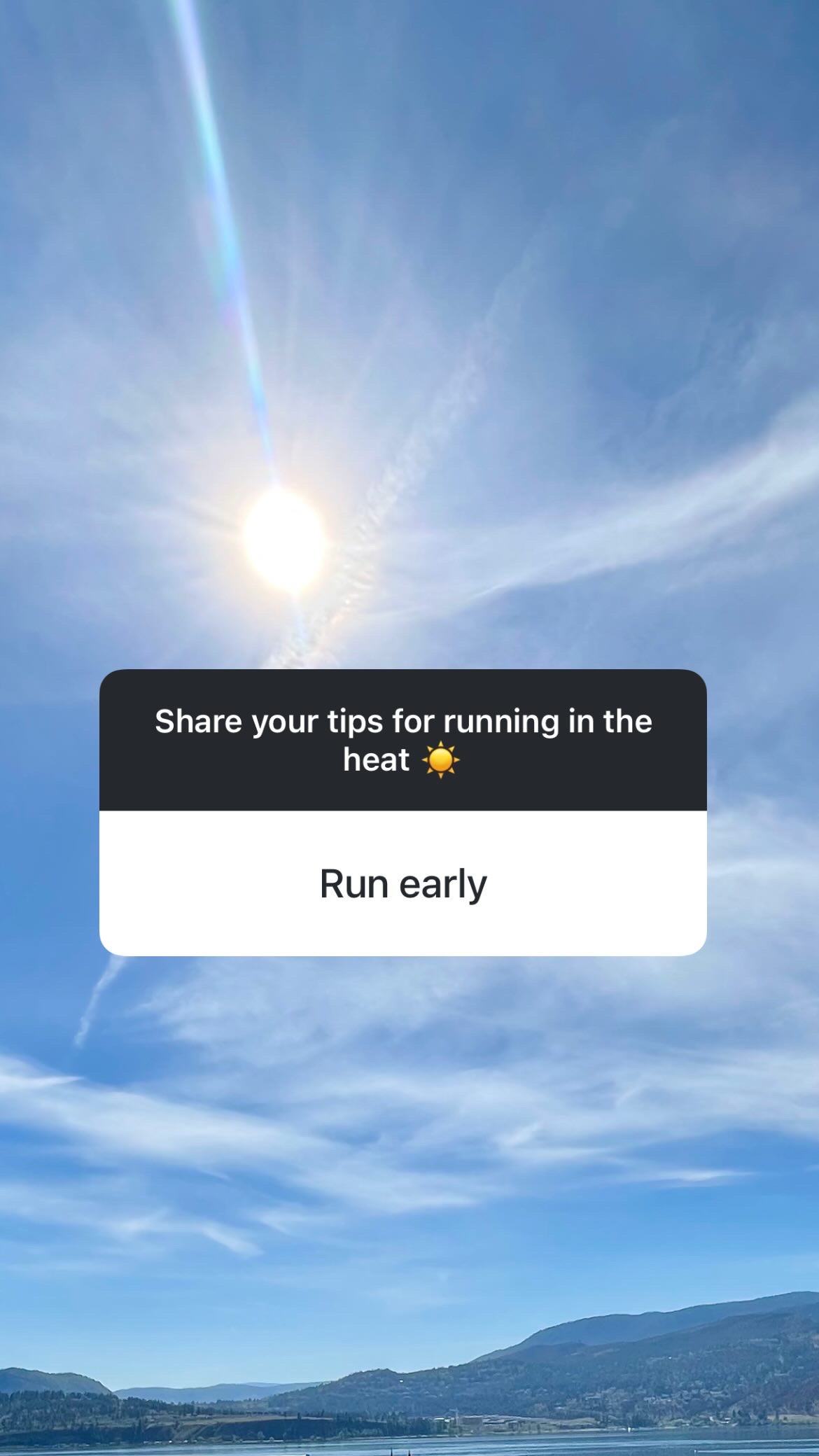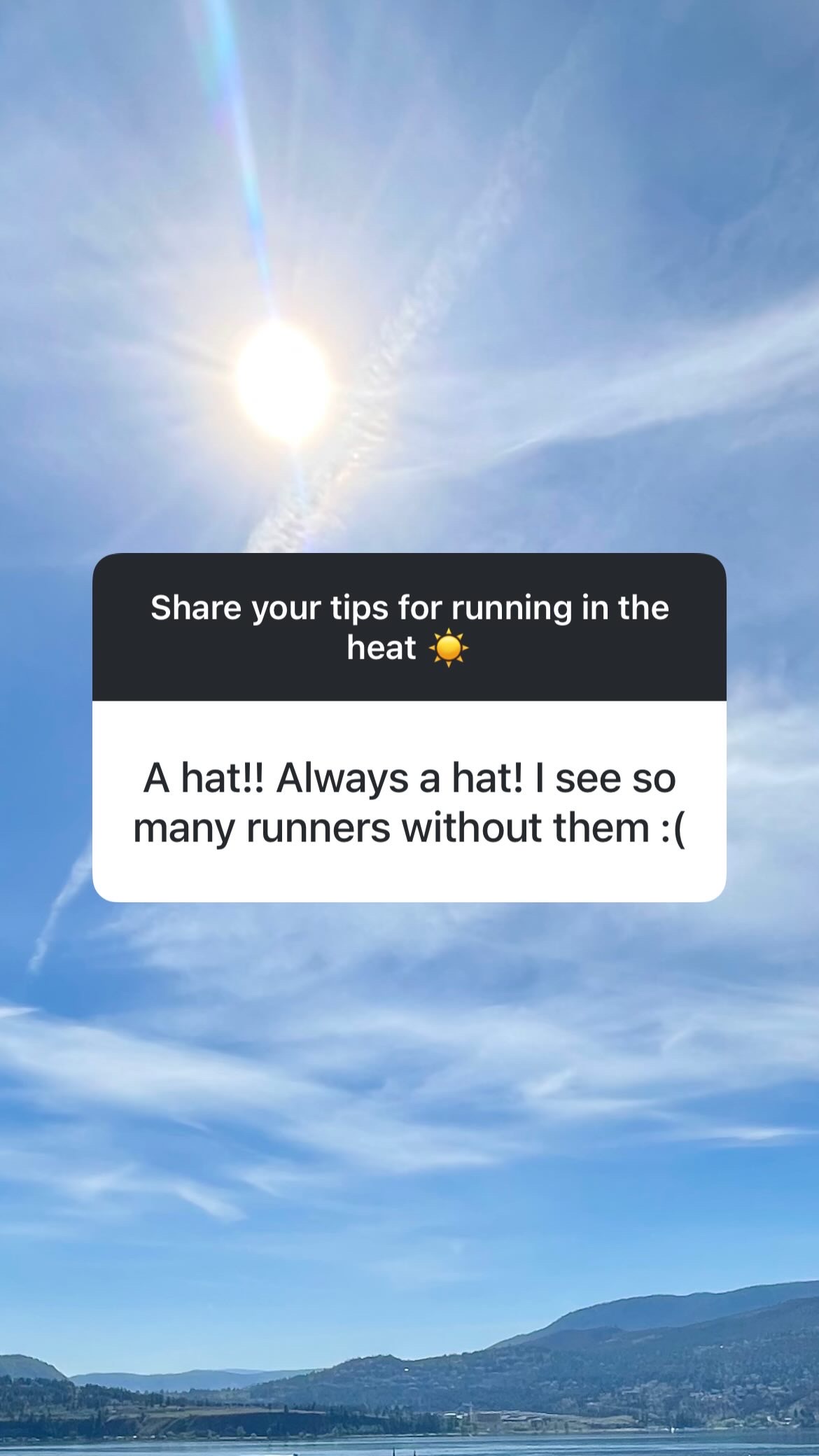RESOURCES
Training Tips, running advice + moreweather tips
 RUN IN ANY WEATHER
RUN IN ANY WEATHER
No matter weather conditions, running can be a rewarding activity that keeps you fit and energized. Whether you’re facing scorching heat, pouring rain, biting cold, or gusty winds, there are strategies and tips to help you conquer the elements and enjoy your runs.
 Hot Race Days
Hot Race Days
Mastering a Hot Race Day: Essential Tips for Success. Stay Cool, Hydrated and Strong in the Heat
Running a race on a hot day presents unique challenges. This guide provides essential tips to help you conquer the heat and perform at your best.
- Hydrate Strategically: Start hydrating days before the race and drink water or sports drinks at regular intervals on race day.
- Dress Smartly: Wear lightweight, breathable, and moisture-wicking clothing in light colours.
- Adjust Your Pace: Start slower than usual to conserve energy and prevent overheating.
- Seek Shade and Use Cooling Techniques: Take advantage of shaded areas and use water or cooling towels to stay cool.
- Stay Fuelled: Consume electrolytes and energy snacks to replenish nutrients lost through sweat.
- Train in Similar Conditions: Acclimate your body to heat through training in hot weather.
- Be Mindful of Heat-Related Symptoms: Recognize signs of heat exhaustion and seek medical help if necessary.
- Listen to Race Officials: Follow instructions from race officials and volunteers for safety and guidance.
- Celebrate Your Accomplishments: Embrace the challenge and be proud of your effort in conquering a hot race day.
With proper preparation and these tips, you can conquer the challenges of a hot race day and achieve success. Stay hydrated, dress appropriately, and listen to your body. Embrace the experience and celebrate your accomplishments. Happy Running!
 Hot Training Days
Hot Training Days
Tips for safely running in hot weather. Beat the Heat.
Trainin in hot weather can be challenging. Here are some tips to help you run comfortably and safely in hot weather.
- Plan your runs: Run during cooler parts of the day. Try running early in the morning or later in evening when the temperatures are cooler. Avoid the hottest part of the day, usually between 10am and 4pm.
- Wear breathable clothing: Choose lightweight, breathable materials that are moisture wicking ideally. Avoid dark colours that absorb heat.
- Stay hydrated: Drink plenty of water before, during, and after your run to prevent dehydration. Consider incorporating electrolytes. Carry a water bottle on your run, plan a route that passes by water fountains or shops where you may refill. FYI the City of Vancouver provides a Map of public Water Fountains.
- Protect yourself from sun: Consider wearing a hat and sunglasses to protect yourself from the sun and heat. As noted, running early in the morning or in the evening may help you avoid peak times of harmful UV rays.
- Slow down your pace: Training and running in hot weather is harder on your body, so keep your pace slower and don’t stress too much about speed or time. Listen to your body and adjust your pace as needed.
- Acclimate to the heat gradually: Start with shorter runs in the hot weather and gradually increase your time and distance as your body adjusts.
Safety should always be your top priority when running in hot weather. Listen to your body, take precautions, and you can still enjoy your runs and stay healthy.
 Cold Race Days
Cold Race Days
How to stay warm on a cold race morning
To stay warm at the start of the race:
- Layer Up: Wear layers of clothing including gloves that may be easily removed as your body warms up. Runners may also wear an old shirt as an extra layer to stay warm before the start of the race. At RUNVAN races, you may discard an older shirt on the Start Line fencing and RUNVAN will donate it to charity.
- Keep Your Extremities Warm: Don’t forget about your hands, feet, and head. Wear gloves, warm socks, a beanie or headband to retain heat in these areas, as they are more susceptible to cold.
- Warm Up: Before heading out to the race, perform a dynamic warm-up indoors to raise your body temperature and loosen your muscles. This will help you start the race with warm muscles and reduce the risk of injury.
- Arrive Early and Stay Active: Arrive early to acclimate to the cold temperatures. Stay active by walking or lightly jogging to generate body heat and keep your muscles warm. Avoid standing still for prolonged periods, as this may lead to rapid cooling.
- Hydrate and Fuel Properly: Cold weather may make it easy to overlook the importance of hydration, but staying properly hydrated is still crucial for optimal performance. Drink water or a sports drink before the race to ensure you’re adequately hydrated.

On cold mornings, additionally, consume a balanced pre-race meal that ideally includes carbohydrates for energy. Fuelling your body properly will help maintain your internal body temperature and provide the energy needed to perform well in colder conditions.
Drink before, during, and after your run. Even in the cold, it’s important to stay hydrated.
Running in cold weather can be refreshing and invigorating, but it can also present some challenges. Prepare well, and you may still have an exceptional race!
 Rainy Race Days
Rainy Race Days
How to handle a rainy race day situation. Tips and Strategies for running your best in wet conditions
Running a race in the rain can be challenging, but with the right mindset and preparation, you may also have a successful race in the rain.
- Dress Appropriately: Wear moisture-wicking clothing that draws sweat and rain drops away from your body. Opt for lightweight, quick-drying fabrics that won’t weigh you down when wet. Consider wearing a hat or visor, to keep rain out of your eyes, and a waterproof jacket to stay dry.
- Protect Your Feet: Choose running shoes that offer good traction on wet or slick services, and consider wearing moisture-wicking socks. It’s great if you also have a pair of waterproof shoes available to help try and keep your feet dry.
- Use Body Glide or Vaseline: Apply a lubricant like Body Glide or Vaseline to areas prone to chafing, such as underarms, inner thighs and feet. This should help prevent discomfort and blisters caused by wet clothes and friction.
- Stay Mindful of Footing: Be cautious of slippery surfaces and adjust your pace and stride to maintain stability. Try to avoid puddles or slippery areas on the course and navigate around them if possible. Take turns and corners more cautiously to avoid potentially slipping.
- Embrace the Rain: Adopt a positive mindset and embrace the rain. Focus on the experience and enjoy the atmosphere that comes with running in wet conditions. Remember that everyone else is dealing with the same challenges, and your mental resilience may give you an edge.
- Maintain a positive mindset: In some instances, cold conditions are actually ideal racing conditions. Consider legend Cam Levins even set the Canadian Half Marathon record with a time of 1:00:18 under wet and mild conditions at our First Half Marathon in February.
- Hydrate and Fuel: Don’t forget to hydrate, even if you don’t feel as thirsty in the rain. Rain can still dehydrate you, so drink water or sports drinks at aid stations. Also, maintain your fuelling strategy by consuming energy gels or snacks as planned to sustain your energy levels.
- Adjust Your Expectations: Understand that running in wet conditions may slow your pace slightly due to the weather and the impact it has on the course. Adjust your expectations accordingly, and focus on running a strong race rather than solely chasing a time goal.
- Stay Safe: Be aware of your surroundings and potential hazards caused by the rain. Watch out for slippery surfaces, fallen branches or other obstacles. If conditions are extreme, listen to race officials and consider adjusting your goals or even withdrawing from the race if necessary.
Stay prepared, stay positive, and stay focused on giving your best effort despite the wet conditions.
 Rainy Training Days
Rainy Training Days
Top Tips for Training and running in the rain.
The number one tip for rainy days is to gear up wisely:
- Gear up with moisture-wicking clothing: Avoid cotton and choose clothing made of moisture-wicking materials that are more likely to keep you dry and comfortable throughout your run. Choose moisture-wicking, quick-drying clothing, plus consider a hat with a brim, a waterproof jacket and waterproof shoes.
- Select the right shoes: Make sure your shoes have good traction to help prevent slipping on wet surfaces. If the soles of your shoes are worn out, it may be time for a new pair. Consider wearing a pair of shoes specifically designed for wet conditions and consider moisture-wicking socks to help keep your feet dry.
- Protect against chafing: Apply a thin layer of body glide or petroleum jelly to areas prone to chafing, such as underarms, thighs and feet. This should help prevent chafing and discomfort.
- Enhance your visibility: Rainy conditions often make it harder for drivers and others to see you, so wear reflective gear or bright colours to help make you more visible to others. Wear reflective or brightly coloured clothing, a hat, or a visor to improve visibility for yourself and others. Also consider using a headlamp or carrying a light if running in low-light conditions.
- Protect your electronics: Use a waterproof case or plastic bag to keep your phone dry.
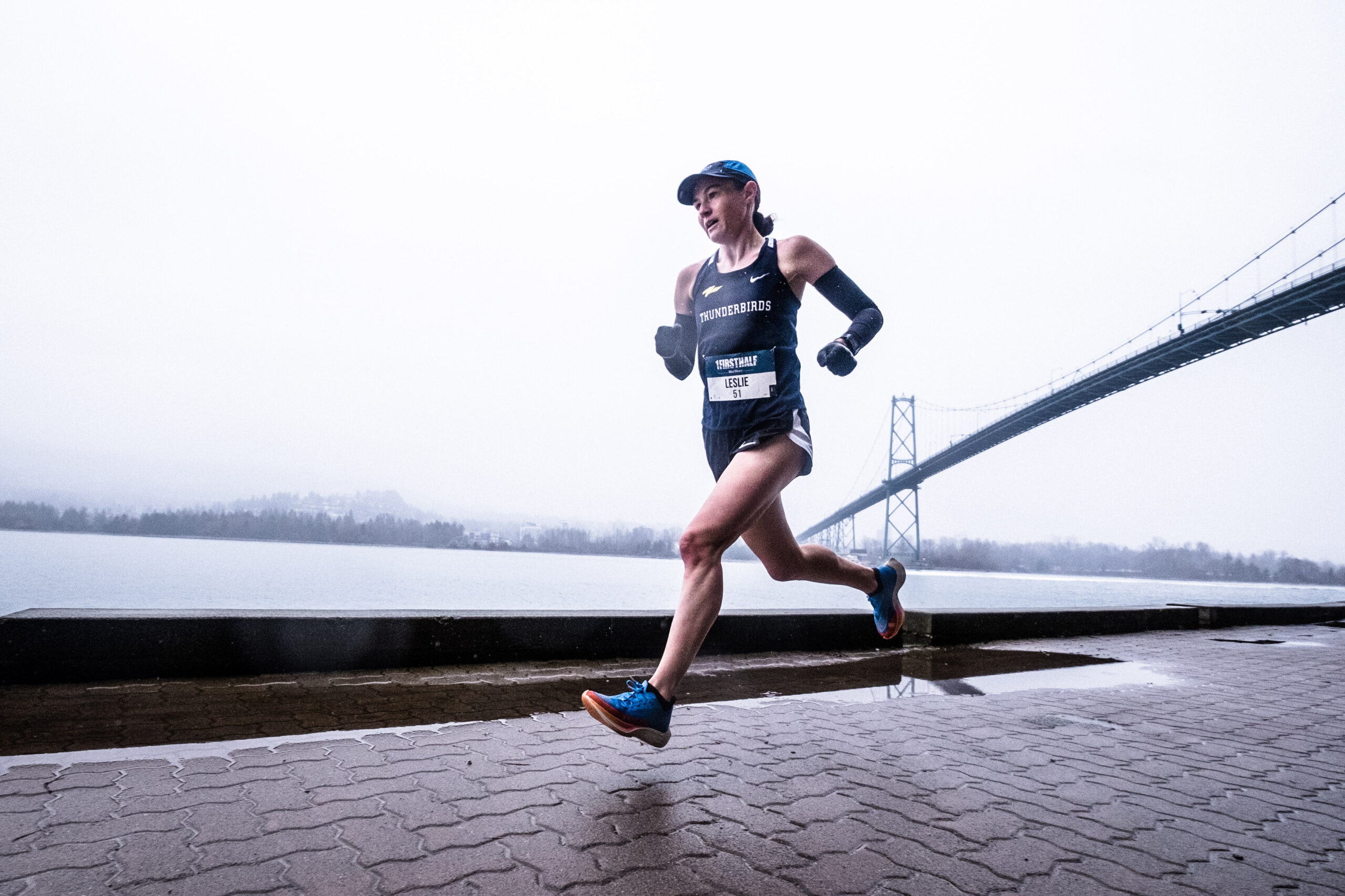
Adjust your pace and expectations
Be mindful of slippery surfaces and adjust your pace accordingly, especially if you’re only training. Embrace the experience and focus on the joy of running rather than pushing for personal records.
Also a reminder to stay hydrated. Even in wet conditions, stay hydrated by drinking water before, during, and after your run.
Running in the rain can be an exhilarating and rewarding experience if you prepare properly. Embrace the challenge, gear up appropriately, and adjust your pace. With these tips, you’ll be ready to conquer wet and rainy day runs and enjoy the unique adventure they bring. Stay safe, stay dry, and happy running!
 Ice and Snow
Ice and Snow
Training in Ice and Snow
For the committed, you may also choose to run through icy or snowy conditions.
Please be cautious in these scenarios as slick roads pose a higher risk of slipping.
And, if there’s ice everywhere, that’s probably a sign to take a rest day or cross-train indoors.
For winters with ‘less than ideal conditions’, here are a few things you may potentially want to try:
- Grippy Shoes: Trail runners often have more aggressive tread and can potentially bite into the snow.
- Extra Traction: Traction, run-specific, devices can slip over your shoes and help provide a more solid grip.
- Slower Pace: Gain a feel for the surface and listen to your body. Similar to racing in the rain, adjust your goals.
- Shorter Strides: This will help you keep your balance and be responsive. Keep your centre of gravity lower too.
- Concentration: Pay extra attention to your foot placement, the surface and conditions.
Be sure to also pay attention to all race announcements.
RUNVAN employs a standardized Event Alert System to help communicate with its runners.

